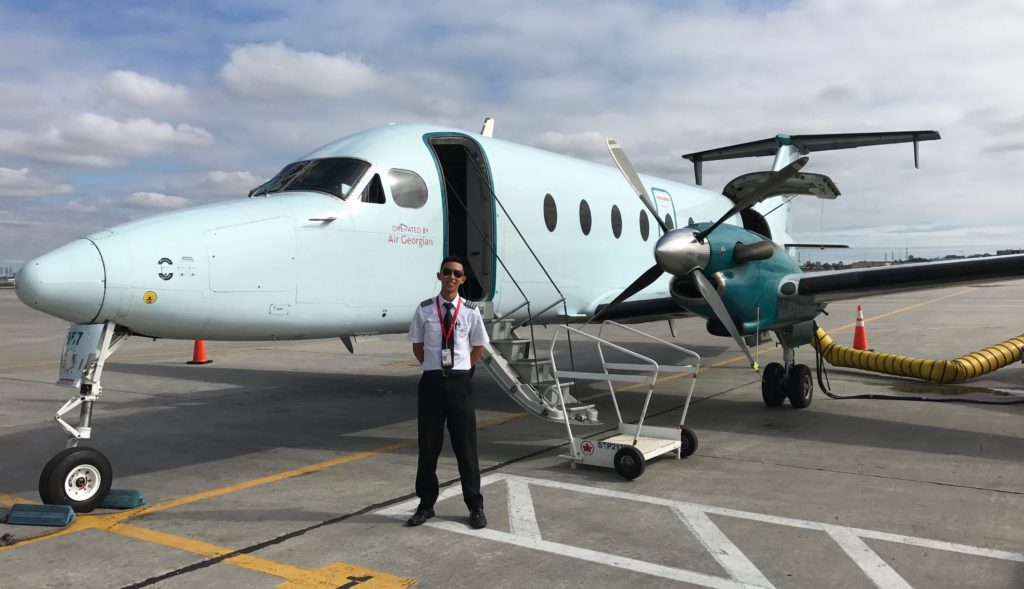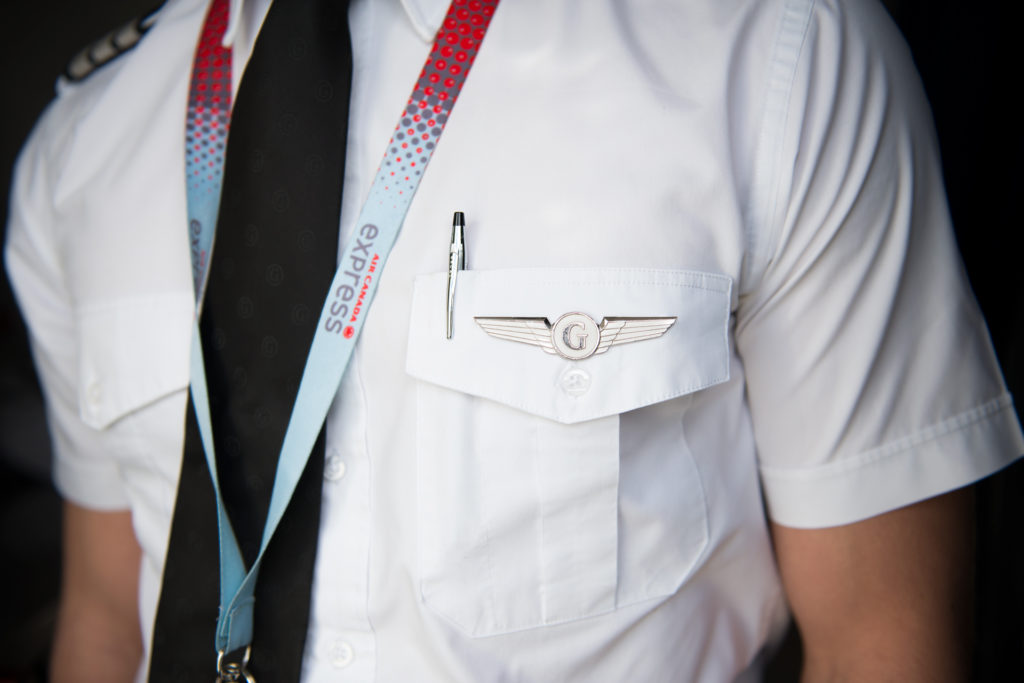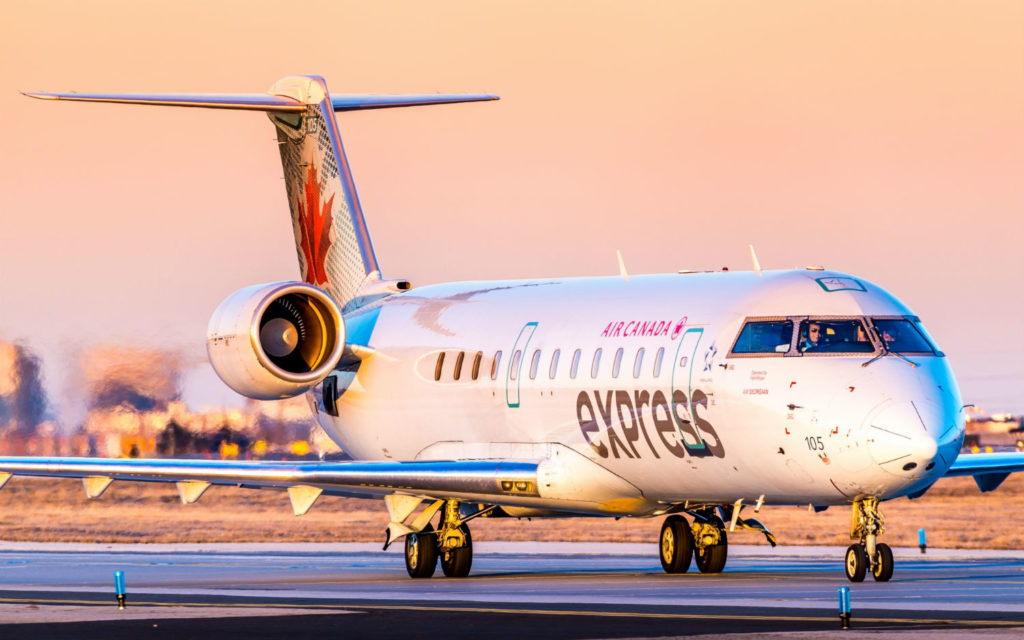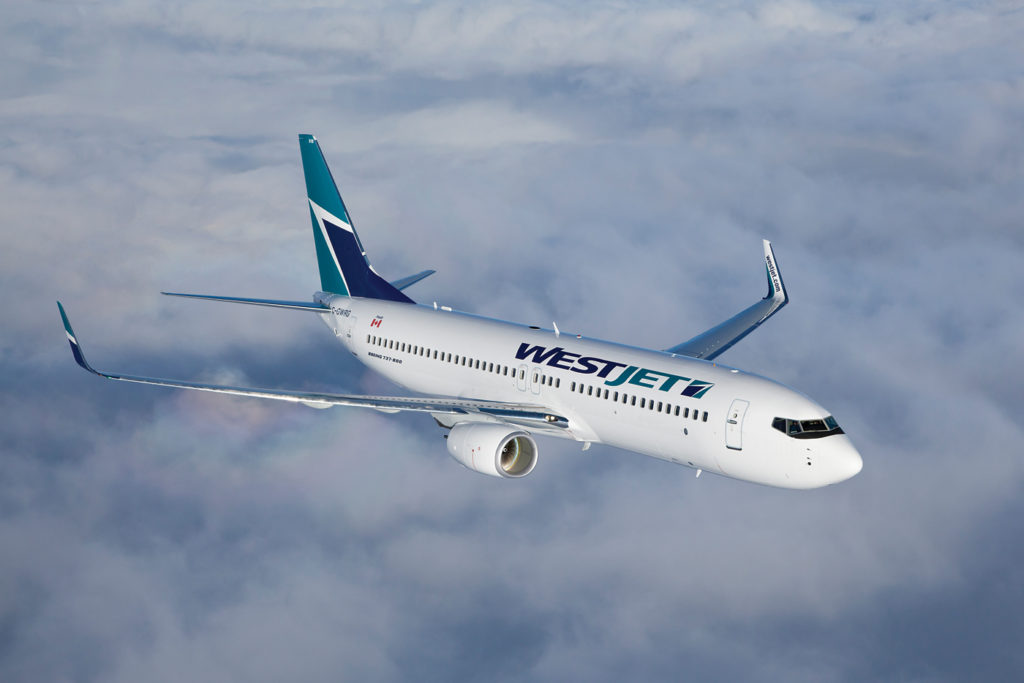Estimated reading time 11 minutes, 48 seconds.
As a young child, Matthew Go would go plane spotting on summer nights with his father, watching the aircraft fly overhead and listening to the sound of their roaring engines.

He wanted to become like the pilots he saw on those trips, taking off toward the upper reaches of the troposphere or touching down after soaring at 36,000 feet.
It was there, as much as anywhere, that he developed a fascination with aviation and the desire to become a pilot. After high school he joined a cadet program run by Air Georgian and Air Canada and moved to Florida for 12 months, where he earned his commercial pilot licence and multi-instrument flight rules (multi-IFR) rating.
After graduation, at age 19, he landed a first officer position at Air Georgian and in less than three years became a captain on Beechcraft 1900 aircraft based at Toronto Pearson International Airport.
“It was a pretty streamlined process and I was pretty fortunate,” said Go, now 22. “I just had to figure out and make the decision after high school that I was going to do it.”
This kind of steep career trajectory, covered quickly, is what’s possible in a Canadian aviation industry already feeling the effects of a pilot shortage expected to require 500,000 new pilots around the world over the next 20 years.

In Canada, as many as 7,300 new pilots, flight engineers and flying instructors will be needed between 2016 and 2025, according to the Canadian Council for Aviation and Aerospace (CCAC).
Young pilots who in the past may have moved steadily through the system over several years, starting as flight instructors and ending up as airline captains, are now clearing major hurdles in a matter of months.
As pilots move up, the effects are felt further down the chain. Flight schools are short on instructors, and regional airlines are losing pilots to larger carriers. The need for a solution is becoming more urgent, and there is no shortage of concern.
“When Air Canada puts out a shingle or WestJet puts out shingle saying, ‘Hey. We’re looking for pilots,’ they’re probably still going to get some decent candidates,” said Mike Doiron, an industry analyst and regional representative on the CCAC.
“The trouble is, in the long term, is that pool of decent candidates effectively going to shrink? There’s no question about that. Where it’s really going to affect the industry is in the lower level.”
The number of commercial pilots trained in Canada over the last 15 years has been “quite flat” at about 1,100 pilots a year, said Doiron in a statement to Skies. About half of students training in Canada are from overseas and return home after getting their licence, he added.
Based on the last five years, production of domestic CPL pilots has been averaging 620 per year, he said. That’s well short of the 833 pilots he estimates Canada will need to produce annually for the next nine years.
“If there is no increase in production we will be approximately 200 pilots short annually, and that is if all candidates trained will be available and acceptable for hire,” he said.

“The variance will probably be bigger. Based on personal experience I would cut approximately 20 per cent of the total, resulting in a little less than 500 available, suitable candidates.”
That would result in an annual shortage of 300 pilots a year, though Doiron acknowledged his estimates are “not scientific,” and are based on available data and his own interpretations.
Doiron is a former chief pilot and chief flight instructor at the Moncton Flying Club in New Brunswick, and spent 19 years at Transport Canada before serving as principal and CEO of the Moncton Flight College for more than a decade.
While it’s difficult to project exactly how many pilots will graduate over the next decade and how many will be needed, the industry is taking steps to recruit new hires.
A meaningful move in that direction may be Air Georgian’s Sharing Opportunities for Advancement and Reward (SOAR) program, launched Nov. 6, 2017, at the Air Transport Association of Canada (ATAC) conference in Montreal.
SOAR aims to increase aviation career awareness among young people, recruit new pilots and pilot instructors, and provide a clear pathway to jobs with Air Canada.

Air Georgian has partnered with several flight schools for its Cadet program, which takes aspiring pilots from zero flight experience to a CPL with multi-IFR rating.
Candidates are put through a highly competitive screening and selection process and, if selected, are assigned a SOAR ambassador who mentors the candidate through their flight training.
If performance-related conditions are met, pilots are offered a first officer position with Air Georgian after graduation. The Cadet program is designed to give preference to students who have not been able to pursue their dreams due to financial constraints.
Cost barriers
The cost of flight training, which can run as high as $90,000 at a flight school and upwards of $150,000 through a college or university, is seen as a barrier to pilot recruitment.
“We liken this to a parent buying their son or daughter a $90,000 lottery ticket because you don’t know where it’s going to end up,” said Capt Dan Adamus, president of the Air Line Pilots Association (ALPA) Canada.
“We want some predictability of stability there, and this industry really, really lacks it.”

Details are still being sorted out, but SOAR intends to provide financial assistance to students starting in 2018.
SOAR also offers a Mentor program that gives low-time pilots and recent flight school graduates an operational support role that transitions into a first officer position after one year.
Another facet of SOAR is its Instructor program, which attempts to address an increasing shortage of flight instructors at Canadian schools. The program allows pilots to build hours and gain pilot-in-command experience while providing a defined pathway into the Air Canada network.
Candidates go through an extensive vetting process and are interviewed independently by partner flight schools and by Air Georgian.
The airline covers the cost of the selected candidates’ flight instructor rating, which can range from $10,000 to $12,000. Pilots in the program instruct at their respective flight school for 12 to 18 months before transitioning to a first officer position with Air Georgian.
“We were really trying to address the issues that flight schools have been facing, with instructor retention and attracting graduating students to become instructors,” said Jeslene Bryant, SOAR coordinator.
“If our flight schools in Canada can’t train the number of students they would like to be [training], none of us get enough pilots out of that.”
Moving in the right direction
All Air Georgian pilots are guaranteed an interview with Air Canada through a pilot mobility agreement (PMA).
Over the next five years, Air Georgian expects 50 per cent of its total hires to be through the various entry points of SOAR. The airline expects to hire 125 pilots per year over that period, with about 80 per cent going to Air Canada through the PMA.
SOAR is expected to create just over 60 employment opportunities a year at Air Georgian, said Bryant. That will help offset the projected attrition of between 100 and 125 pilots per year from Air Georgian over the next five years, though Bryant said flight and duty time regulation changes will have a large impact on those numbers.

How to match the number of pilot trainees with the number lost through attrition “has always been the million dollar question,” said industry analyst Mike Doiron.
But SOAR, and programs like it, are seen as steps in the right direction. They may be part of a larger solution ALPA Canada and other airline representatives are exploring through a working group that ATAC is spearheading.
“We’re still collecting data and working on different ideas,” said Dan Adamus, president of ALPA Canada. “Some would say that the problem is simple: You pay more money and more kids will want to get into the industry, and some of the airline executives have recognized that. But it’s more complicated than that.”
As for Matthew Go, the Air Georgian pilot who fell in love with aviation as a child and who moved through the system more quickly than most, he knows this is a time of unprecedented opportunity.
“I’ve seen it change, just from my time at Air Georgian–the three years,” he said.
“The talk around my household: it’s almost unheard of to see this kind of level of movement and job opportunity, which is great for the industry and great for people getting into it now.”








